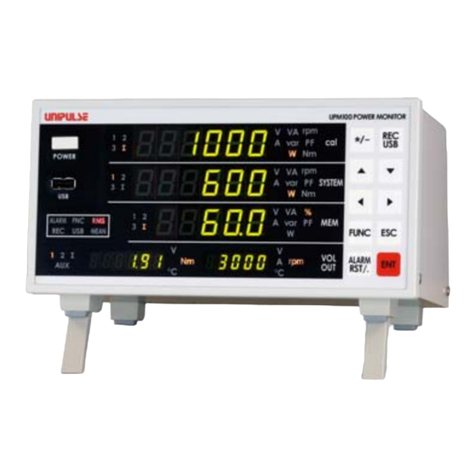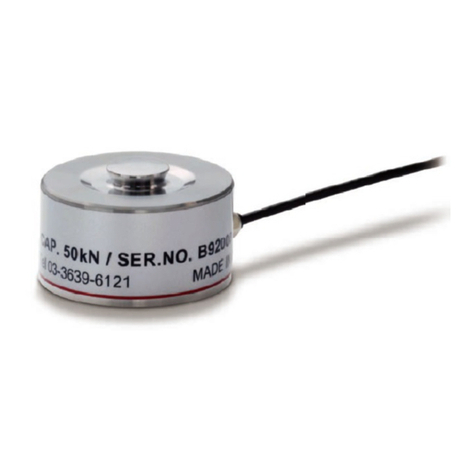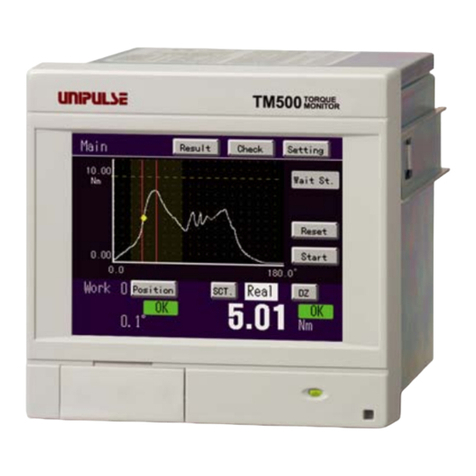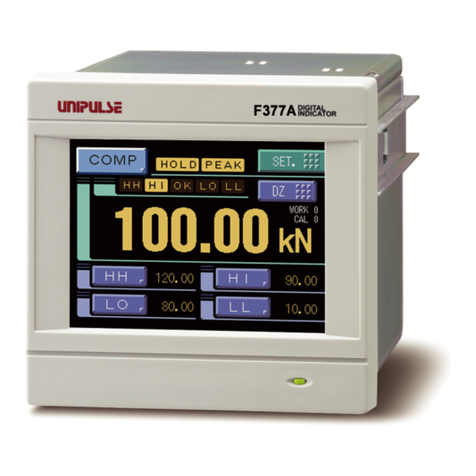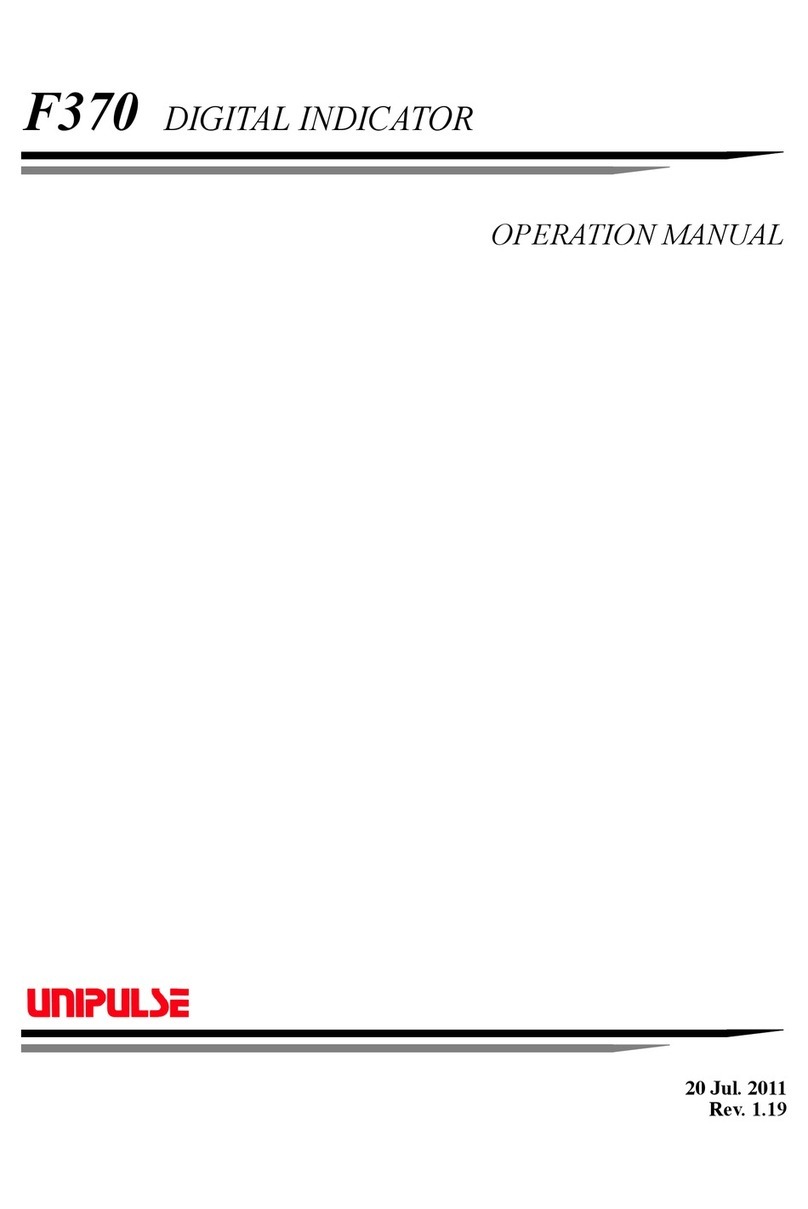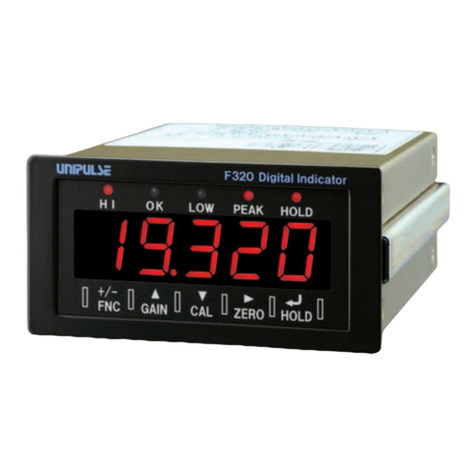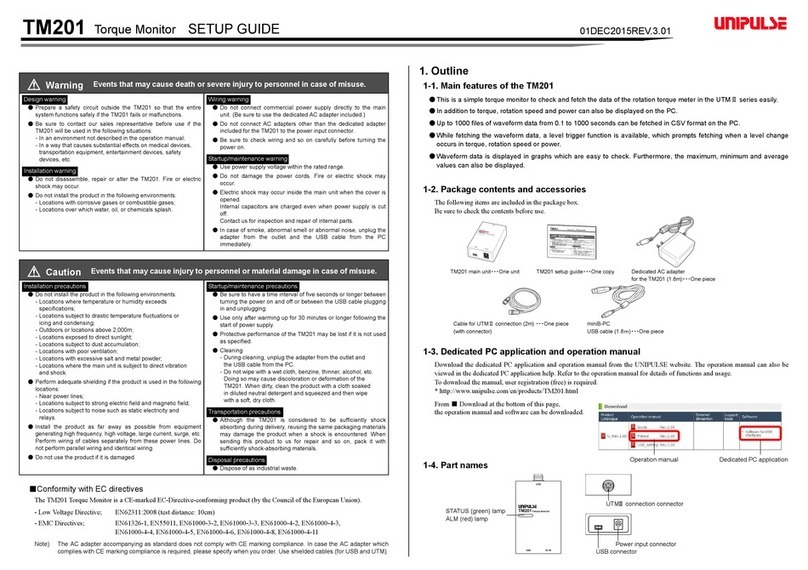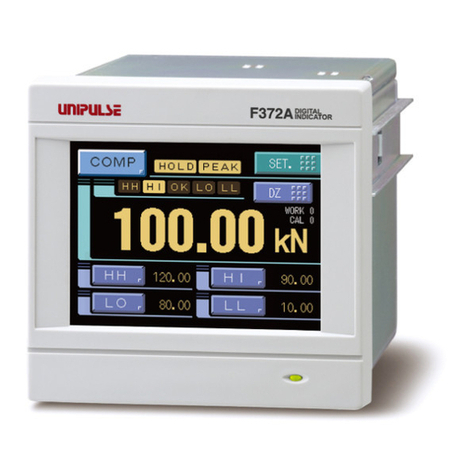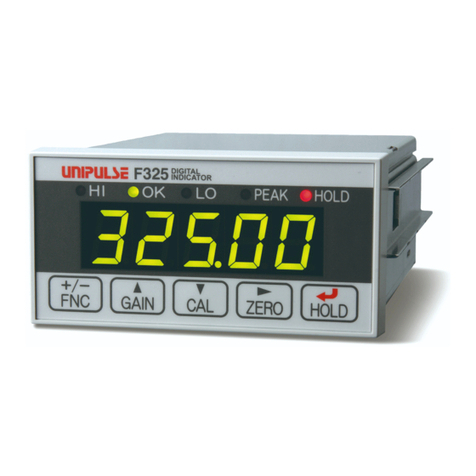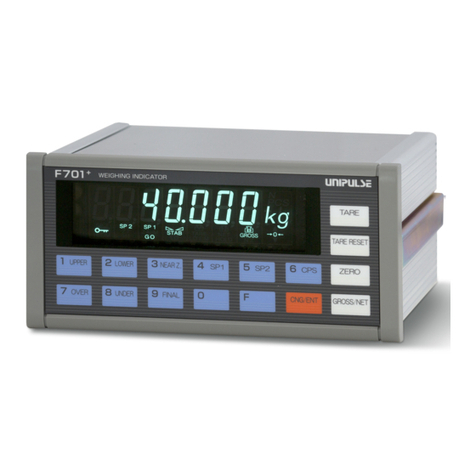
UTMⅡ-20Nm/UTMⅡ-20Nm(K)ROTATING TORQUE METER OPERATION MANUAL 04DEC2013REV.1.01
1. Outline of the product
This product is a torque meter that detects the torque applied to a rotating shaft with a strain gauge, transmits
it to the receiving section by non-contact, and outputs it as voltage.
By simply giving 24V DC power without adjustment, voltage calibrated by the rated torque is output. Also,
since an open collector output for rotation detection is equipped, the rotation speed and torque can be
measured at the same time.
2. Warnings, prohibitions, and cautions for handling
PROHIBITION
Do not disassemble this product.
Do not drop this product or give it a high impact.
Do not use this product for other purposes than torque measurement.
WARNING
●For the entire system to function safely when
this product becomes faulty or malfunctions,
provide a safety circuit outside this product.
●Before using this product as described below,
make sure to consult with our sales personnel.
• Use in environments not described in the
operation manual.
• Use greatly impacting human lives and assets,
such as medical devices, transport devices,
weapons, entertainment devices, and safety
devices.
●Touching this product while in operation with
your hands or fingers will cause injury. Also,
your clothing may get caught. For hazard
prevention, make sure to install a safety cover,
or provide a safety device so that the equipment
is stopped if there is a danger of touching the
rotating parts.
●If this product is damaged, the drive side and
load side may be completely separated. For
hazard prevention, make sure to provide a
safety mechanism, such as a safety brake.
●Do not install in the following environments.
• In a corrosive or flammable gas atmospheres.
• Where the product may be splashed with
water, oil or chemicals.
●If couplings, etc., are assembled with the shafts
misaligned or bent, not only will the
performance of the product be unsatisfactory
but also this product may be damaged by
rotational vibrations and scattering in the worst
case, which is very dangerous. Make sure that
a balance is achieved and there is no vibration
under low-speed rotation before operation, in
addition to shaft centering as a matter of
course.
●Install this product to your equipment within the
allowable installation errors. Use with the
allowable installation errors exceeded may
damage the product or affect the equipment to
which this product has been installed.
●Do not pass current through the shafts or
housing of this product. Also, take external
measures to prevent leakage current from
flowing through the shafts.
●Do not connect commercial power directly to
this product.
●Before performing the following, make sure that
no power is applied.
• Insertion/extraction of connectors
• Wiring/connection of cables
●Insulate the ends of unused cables to prevent
their contact with other metallic parts and
electrically charged parts.
●Before applying power, carefully check the
wiring, etc.
●Do not repair, internally inspect, or modify this
product. A fire or electric shock may occur.
Please ask us for repair.
●Make sure that the fastened parts are reliably
secured before startup.
●Use the power supply voltage and load within
the specification and rated ranges. Use beyond
the rating may not only damage this product but
also affect the equipment to which this product
has been installed.
●If the cover of the main body is opened, you
may receive an electric shock internally or get
caught in the rotating parts.
●If smoke, fire, or abnormal odor is detected,
immediately turn off the power.
●During rotation, do not touch the rotating parts
of this product and also the non-rotating parts.
Be careful not to get your hands, fingers, and
clothing caught in them.
●
Operation exceeding the maximum rotation speed
will increase vibration, and may damage and
scatter the product in the worst case, which is
very dangerous. Make sure to use at the
maximum rotation speed or less. Also, even at the
maximum rotation speed or less, please use it so
that vibration by the dimensional errors on
attachment does not take place.
●Operation with the fastened parts loose may
cause a slip, generating abnormal heat, or
cause damage, affecting the equipment to
which this product has been installed. Make
sure to use with the fastened parts reliably
secured.
This sign indicates don'ts (prohibited matters)
on operation
This sign forewarns the presence of hazards that could result in
serious injury or fatality when incorrectly handled.
Warning during startup and maintenance
3. Part names and functions
①Rotating shaft on the drive side This is a drive side rotating shaft. A drive unit that rotates the
shaft is connected to it.
②Rotating shaft on the load side This is a measuring side rotating shaft. It is connected with the
drive side rotating shaft internally. The object to measure the
torque is connected to it.
③Direction of rotation A positive output is made by turning the load
sidecounterclockwise when viewed from the drive side.
④Housing This is the main body of the measuring instrument. It is connected
by shafts and bearings. For the housing detent fixing holes, use
M3 screws 6mm or less in length.
⑤Connector Connect power and signal wires.
Connector used: HR30-6R-6S(71) Hirose Electric
Compatible plug: HR30-6P-6P(71) Hirose Electric
CAUTION
●Do not install in the following environments.
• Where the temperature/humidity exceeds the
range of the specifications.
• Where the temperature changes remarkably or
there is a danger of freezing or condensing.
• Where there is a temperature difference
between the drive side and load side.
• Outdoors
• Places exposed to direct sunlight
• Dusty places
• Poorly-ventilated places
• Places with a high salt content and a lot of
metallic powder.
• Where the main body is directly affected by
vibrations or shocks.
●Take sufficient shielding measures including
cables for use in the following places.
• Near power lines
• Where a strong electric field or a strong
magnetic field is generated
• Where static electricity, relay noise or the like is
generated.
●Install this product as far away from devices
generating high frequency, high voltage, large
current, surge, etc., as possible. Also, carry out
wiring separately from their power lines. Do not
carry out parallel wiring and common wiring.
●Do not use it, broken down.
●Do not use screws other than specified by us.
●Depending on routing, cables may be charged
with static electricity. The charged static electricity
may destroy the semiconductors in the
equipment.
●Use stable 24V DC power.
●Use shielded cables.
●For cable extension, AWG26(0.13mm2) or more
and a length of maximum 10m or less should be
observed.
●If not used by the specified method, the protection
performance of this product may be impaired.
●Maintenance
• When performing maintenance, disconnect the
power.
• Do not wipe with a wet rag. In the case of heavy
contamination, wipe off the contamination with
a cloth after dipping it into a diluted neutral
detergent and wringing it well, and then wipe
with a soft, dry cloth.
●When this product is shipped, spacers made of
corrugated cardboard are used as cushioning
materials. Though it is factory-designed so that
shocks can sufficiently be absorbed, breakage
may result if shocks are applied when the spacers
are reused for transportation. If you send this
product to us for repair, etc., take adequate
measures against shocks by using polyurethane
materials, etc., separately.
●If you dispose of the product, handle it as
industrial waste.
This sign forewarns the presence of hazards that could result in
personnel injury or property damage when incorrectly handled.
Caution during startup and maintenance
Caution during transportation
①Rotating shaft
⑤Connector
②Rotating shaft
④Housing
⑥Attached cable
(HR30-6R-6S(71))
③Direction of rotation
on the drive side
on the load side
Connector pin assignments
⑥Attached cable (2m)
Connector pin assignments
Type Pin
No. Signal name Description of signal
Power
supply
1PWR+(+24V)
Connect to +24V power supply. Voltage range must be
within +24V plus-minus 15%. Use a power supply that can
stably operate with a small load since the consumption
current is 150mA or less.
2PWR-(0V)
Torque
signal
3SIG OUT
(±5V DC)
This is a torque signal output. As for voltage output, 0V is
output at no load, and 5V is output when the rated torque is
applied. The minimum drivable load is 2kΩ.
Depending on the environment where the product is used,
noise from motor or inverter and signal from the product
may overlap. To reduce the noise level, please use RC
circuit/filter to let signal output pass through the filter right
before input device.
4SIG GND
Rotation
signal
5PULSE OUT+
(Photocoupler)
Pulse signal output generates 4 pulses per 1 rotation.
Rated voltage and current are 30V and 10mA, respectively.
6PULSE OUT-
R
680Ω
SIG OUT(±5VDC)
SIG GND
R
SIG OUT
SIG GND
UTMⅡ
(±5VDC)C
R=100Ω
C=0.1μF
Connection
device
Waterproof connector (plug)
HR30-6P-6P(71)
1:Red
2:Black
3:Green
4:White
5:Yellow
6:Brown
Shield
2000mm
50mm
PWR +(+ 24V)
PWR -(0V)
SIG OUT(±5VDC)
SIG GND
PULSE OUT +
PULSE OUT -
Pin arrangement Pin No. Cable color Signal name
1Red
PWR+(+24V)
2Black
PWR-(0V)
3Green
SIG OUT(±5VDC)
4WhiteSIGGND
5Yellow
PULSE OUT+
6Brown
PULSE OUT-
Shield Braided wire *The shield is not connected
to the UTMⅡhousing.
